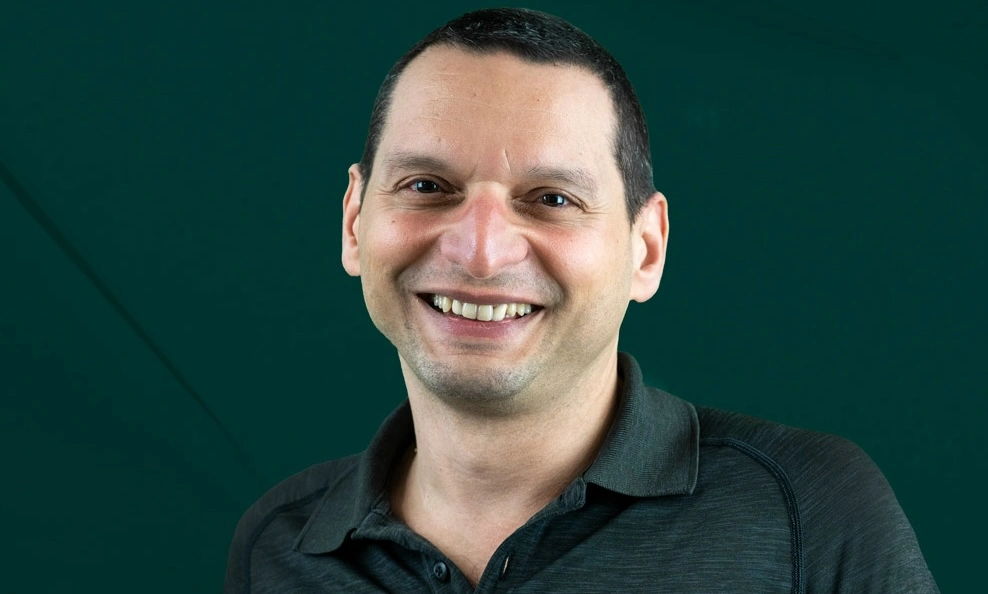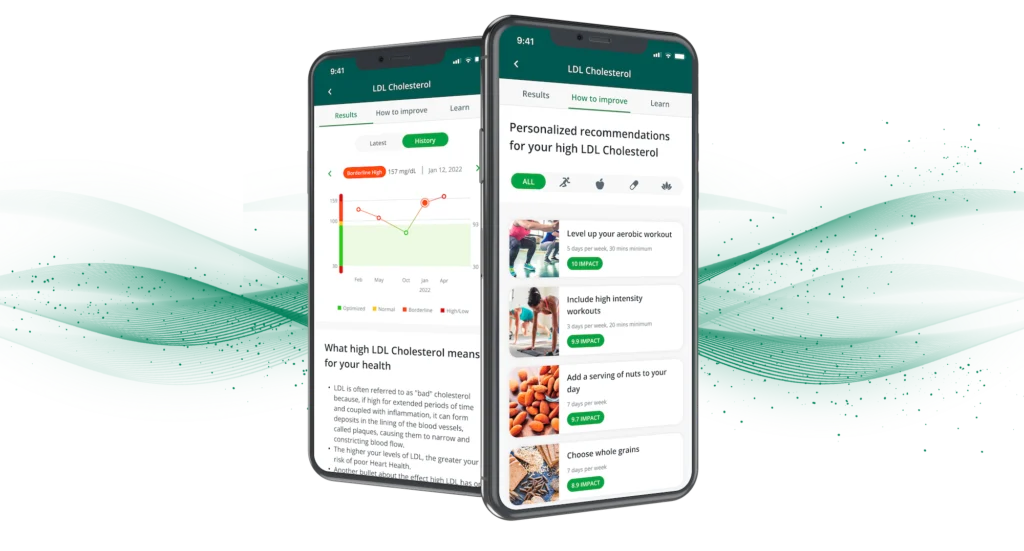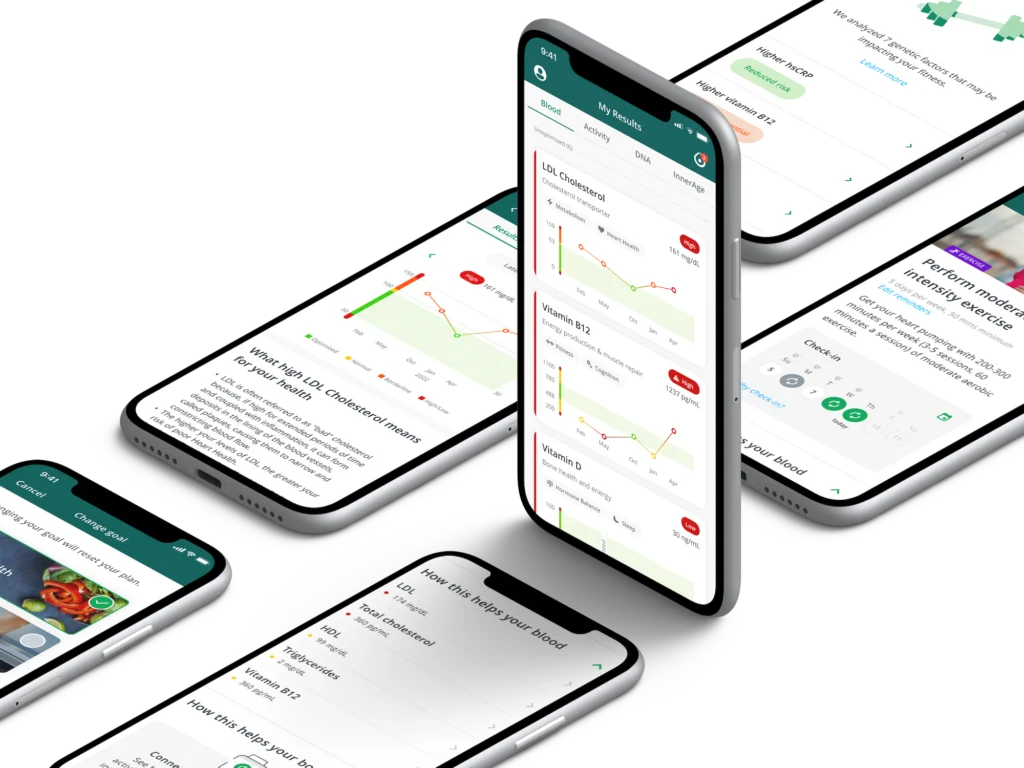CEO Corner: InsideTracker’s Rony Sellam on the Future of Personalized Health

Sellam has built health analytics company InsideTracker into one of the tech platforms powering the booming longevity space
The longevity movement is growing by the day as Fortune 500 companies and everyday consumers alike embrace the ideal that people should live healthy, disease-free lives into old age. Rony Sellam, the CEO of InsideTracker, a Boston-based health analytics company, is playing a key role in that evolution.
A former Deloitte consultant and healthcare IT executive, Sellam joined InsideTracker as CEO over a decade ago, shortly after the company’s founding, after a fateful conversation with a prominent cardiologist spurred him to get involved in the preventive care space.
In the years since, InsideTracker has become one of the key players powering the booming longevity space, topping 100,000 members and inking partnerships with smart ring maker Oura and gym chain Fitness SF.
At a high level, the company combines blood test results, DNA analysis and other metrics to help users make sense of their bodies and take actionable steps – exercise, sleep and supplementation, to name a few – so they can live longer and healthier lives.
“Where blood testing stops is where InsideTracker starts,” Sellam explains.
Sellam, who was born in France and started his career in Switzerland, spoke with Athletech News about his unlikely path to becoming CEO of an American tech company, what separates InsideTracker from traditional blood tests, and his predictions for the future of health and longevity.
This conversation has been lightly edited for clarity and length.
Athletech News: Can you tell us about your background and why you decided to join InsideTracker?
Rony Sellam: After business school in Europe, I started my career in consulting with Deloitte, in Geneva, Switzerland. I then moved to Boston after Deloitte offered me an opportunity to take part in their Global Development Program, which is an 18-month to 2-year-long (exchange) program. As soon as I arrived in Boston, I fell in love with the innovation ecosystem, and my wife and I decided to stay.
In Boston, I quickly got hired away by one of Deloitte’s clients, which happens very often in the consulting space. I fell in love with healthcare immediately upon working in healthcare IT. I was with that company for 13 years and had a great time working directly with physicians and patients, especially on the cardiovascular side.
The connection to Insidetracker – and to the concept of prevention and longevity – came from a conversation I had with a well-known interventional cardiologist, Dr. Spencer King. He and I were sharing a Scotch one evening in Atlanta, and I asked him what I thought was a pretty benign question: “Hey, Spencer, you’re about to turn 72, you’re on top of the world of interventional cardiology, but what would you do differently looking back?” He looked at me very seriously and said, “I would have spent my career focused on prevention, not intervention. You’ve got to catch people before they’re broken.”
Through one of my mentors at the time, I got introduced to (founder) Gil Blander and scientists from Harvard, MIT and Tufts, who were doing some work for what would become InsideTracker. I immediately fell in love with the concept of extracting data from your body, mapping it to the best available science and coming back with actionable recommendations to help people live healthier and longer. That’s what InsideTracker does.

ATN: What makes InsideTracker different from a typical blood test you’d get at the lab or your primary care doctor?
RS: There’s no difference in the blood test itself. The interpretation, analysis and insights are where we make a difference. The doctor’s job is to use blood testing as a screening mechanism to identify disease, which is extremely important. However, if you’re not sick, there’s very little from a value that accrues back to the patient. For most of us, the absence of sickness does not mean health. In the U.S., there’s a 16-year difference between healthspan and lifespan.
We connect the dots between your blood test numbers and things like your age, gender, ethnicity, level of physical activity, how much alcohol you consume, etc., and offer things you can do to improve on an ongoing basis. Where blood testing stops is where Insidetracker starts.
ATN: How has InsideTracker – and the longevity space as a whole – evolved over the 15 years since the company’s founding?
RS: We started with blood and then added DNA and physiological markers from fitness trackers, and we’re about to add food inputs using AI. It’s going down the path of more sophisticated inputs so that actionability is increasingly precise, differentiated and personalized.
Over the last 10-plus years, it’s become really exciting because we can now see that InsideTracker is driving results not just in the first year but in year five, year six, and so on. Seeing those continuous results is amazingly rewarding.
We’ve now surpassed 100,000 members on InsideTracker. A few years ago, when we talked about healthspan and longevity, people called us crazy. That’s now really become an accepted, exciting and growing segment. Many healthcare organizations are now interested in prevention space, the “gym-as-a-clinic” concept is growing faster and faster by the minute, and you see more and more longevity resorts coming out across the globe. I think consumers are really looking for a solution to health optimization and health improvement as opposed to just disease screening.

ATN: Speaking of the “gym-as-a-clinic,” InsideTracker recently partnered with Fitness SF, a Bay Area gym chain. How did this come about?
RS: Fitness SF has strong leadership with a vision of partnering with their members to make them healthier. Some of their leadership became InsideTracker customers and it’s changed their lives for the better from a health perspective. So they quickly realized the power and the impact this can have, and they are genuinely intent on making the type of service we provide and the type of service they provide joined at the hip; it’s not just a press release or a way for them to sell more personal training time. They genuinely believe the right solution for business success, which comes from driving results for their members, includes a health and wellness offering that is science-based, looks inside, gives you recommendations and allows you to track progress over time. It’s a very exciting partnership.
In general, we intend to do more business-to-business partnerships. We’re the only company in the space that has published science around our platform. We’ve been around for over 10 years and we’ve accumulated a ton of data. We’re a credible, scientific player, not a fly-by-night company selling magic pills or promising the moon.
ATN: Can larger, low-priced gym chains benefit from an InsideTracker partnership, or is it best suited to more upscale health clubs?
RS: It doesn’t have to be upscale. You’ve seen Equinox charges $40,000 a year, which is certainly not how we look at the world. We want the masses to be able to live healthier, longer. InsideTracker is absolutely applicable to large gym chains if they’re able to view it beyond just being another SKU, and they move toward a whole-health approach.
We’re also applicable to many other segments that have a direct interest in making someone healthier, including primary care models, companies in the GLP-1 space and supplement companies.
ATN: Can you share any predictions for what’s coming next in the health and longevity space that could change the industry?
RS: In 10 years, I doubt blood testing will be done by walking into a lab. I think it’s clear that at some point we’ll all be able to bleed, pee or sweat on our iPhones and get real-time results. We’re already doing something like that currently; we have a model with handheld devices where you get almost instantaneous results that go up to the cloud. It’s not used on humans yet, but that model is working for us at InsideTracker.
At the end of the day, for a company like Insidetracker, we don’t care if it’s blood, DNA, fitness tracking or how we get the data. We’re the best intel and recommendation engine on the planet for health, wellness and lifestyle intervention.



